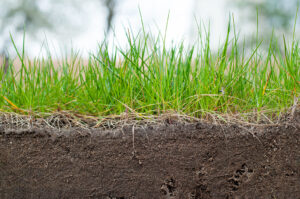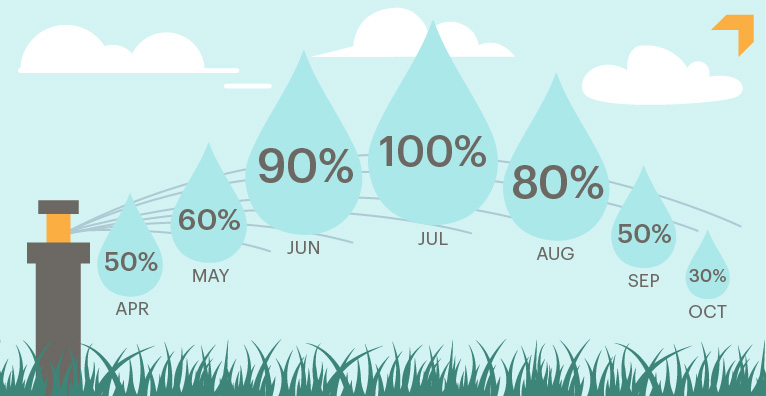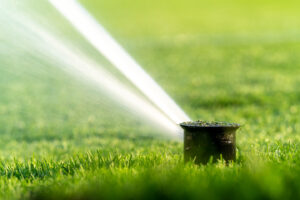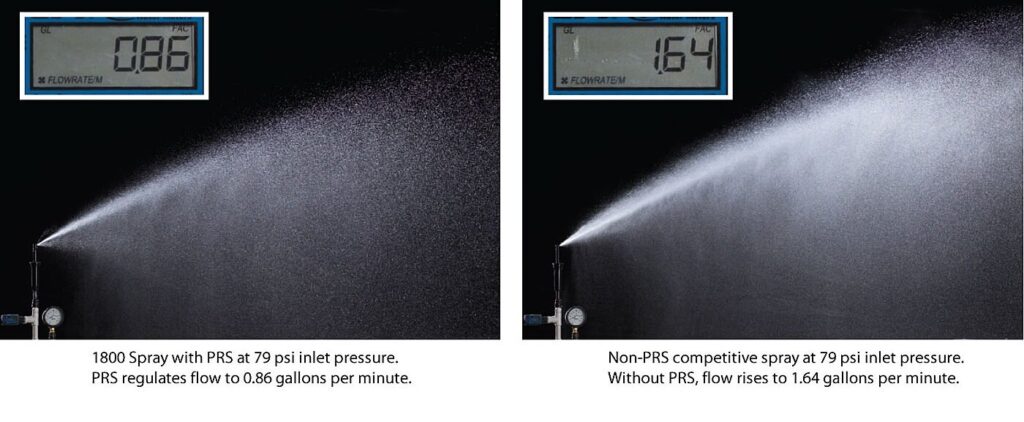by Gordon Lemmel, Landscape Architect, WSB
Outdoor water consumption is a pain point for many individuals and communities, and as a landscape architect that designs both the sites and irrigation systems, I wanted to present my approach and the water savings strategies that can be used.
Limiting water usage is often much easier said than done. Properties in arid western climates for example, require some level of irrigation to keep looking nice throughout the year. They need a functional, drought-tolerant, and water-efficient landscape without compromising aesthetic values.
Planting strictly native and drought-tolerant species is an option many choose, but it’s not always practical in all situations. Using a combination of water-saving strategies is the most practical approach that landscape architects can use. We keep the big picture in mind – from initial concept to final construction documents – by focusing on strategies centered on site conditions, efficient irrigation design & technology, & efficient irrigation management.
Site Conditions
Evaluating the existing and proposed site conditions is a critical first step to water conservation on any project.
Is the site facing the hot southwest sun? Are there predominant winds that will dry plants out or carry irrigation water away? Can the soils retain water for use? Does the site slope in a way that runs water away from the plants?
Soils

Starting from the bottom up, amending soils, or using topsoil that has compost is directly correlated to long-term water reduction. Compost is spongy and absorbent, and it facilitates the soil’s water-holding capacity and moisture dispersion.
Soil scientists from the National Sustainable Agriculture Information Service report that for every one percent of organic matter present, each cubic foot of soil can hold an extra 1.5 quarts of plant-available water (Gould, 2012). This increased water retention capability and plant-available water reduces the frequency and intensity of irrigation water.
Drainage Patterns
Understanding existing and proposed drainage patterns inform both plant selection and placement, which can be helpful for reducing water consumption. Plants that prefer wetter areas, for example, can be placed at the bottom of a slope where water collects, and vice versa.
Temperature and Solar Exposure
Both temperature and solar exposure are also important for guiding plant selection and reducing water use. Plants that are selected for projects should be either hardy or adapted to the region. These plants can survive the average high and more importantly, the average low temperatures for the region.
Light conditions (the amount and length of exposure to sun or shade) directly correlate to soil moisture. Correctly placing plants based on solar exposure helps to reduce water consumption by removing the need for supplemental watering (e.g. providing extra water to moisture-loving plants placed in drier, sunnier areas).
Efficient Irrigation Design & Technology
Irrigation efficiencies in the form of design, product selection, and technology are integral to landscape water reduction.
Design
Drip irrigation is the most popular method to efficiently deliver water directly to the root of the plant and unlike broadcast irrigation methods, it reduces applying water to areas of the planting beds that do not require water – like the spaces between plants.
However, many properties have that nice green lawn that is great for recreation. While there are below ground drip irrigation options that can eliminate water waste from evaporation and wind, they are not always possible or the most cost effective. The more common above-ground systems must be designed to reduce overspray, watering of hardscape surfaces, and excessive runoff.
Products
Water conservation efficiencies can also be gained through product selection, such as using pressure-regulated and matched-precipitation sprinkler heads. Pressure regulation is crucial to an irrigation system because it reduces water waste caused by high pressure operation that results in fogging or misting. Pressure regulation also ensures the nozzles run at maximum efficiency and helps support proper distribution uniformity and precipitation rates. The use of match-precipitation sprinklers helps to ensure a uniform application of water over an area and reduces excessively wet and dry areas.
Technology
The water saving technology on most modern irrigation systems uses an Environmental Protection Agency WaterSense “smart” controller that optimizes the timing, quantity, and frequency of water applied to the landscape. One important feature of “smart” controllers is seasonal adjustments. This feature allows the controller to make automatic adjustments to the daily watering schedule based on the season and geographic location.

The irrigation design may also include a variety of sensors to further fine-tune the efficiency of the system. A rain/freeze sensor shuts off the irrigation system during rain and freeze events – not only protecting the irrigation system from potential damage or safety issues, but also preventing the unnecessary application of water during (or directly after) rain events. Likewise, a soil moisture sensor will help the controller make automatic adjustments based on the moisture levels of the soil.

Flow sensors and master valves are often employed to shut off a system with “unscheduled flow events” or “high flow events.” These events are generally caused by some type of damage to the irrigation system. So, rather than letting it run until there is a noticeable issue, the sensor detects abnormal operation, shuts the system down, and can alert a user to it. Some systems can even be designed to help pinpoint where the problem is.
Efficient Irrigation Management
The final part of water conservation comes down to efficient management practices. On particularly nuanced projects, I will work with the contractors or maintenance staff on deploying efficient management strategies, such as cycle and soak irrigation. Cycle and soak programming increases infiltration and reduces runoff by breaking up water applications into shorter time periods.
This article discusses many of the methods that reduce water consumption, but there is much more!
Sites and projects greatly vary, so I always approach water conservation and reduction by being intentional and considering the what, where, and how of a project. There is no single silver bullet, but any of the methods discussed in this article are a great starting point for increasing efficiency, saving water, and saving money.

Gordon’s diverse background is beyond those of a typical landscape architect and allows him to view projects through many different “lenses.” As a former non-profit executive director, he was responsible for land management and acquisition, fundraising, volunteer recruitment and management, and working with a board of directors. This experience feeds into Gordon’s 14-year career helping organizations envision their preferred future, navigate change, lead and facilitate diverse teams, and develop relevant, inclusive, iconic, sustainable, and achievable strategies.
[email protected] | 701.214.9315


